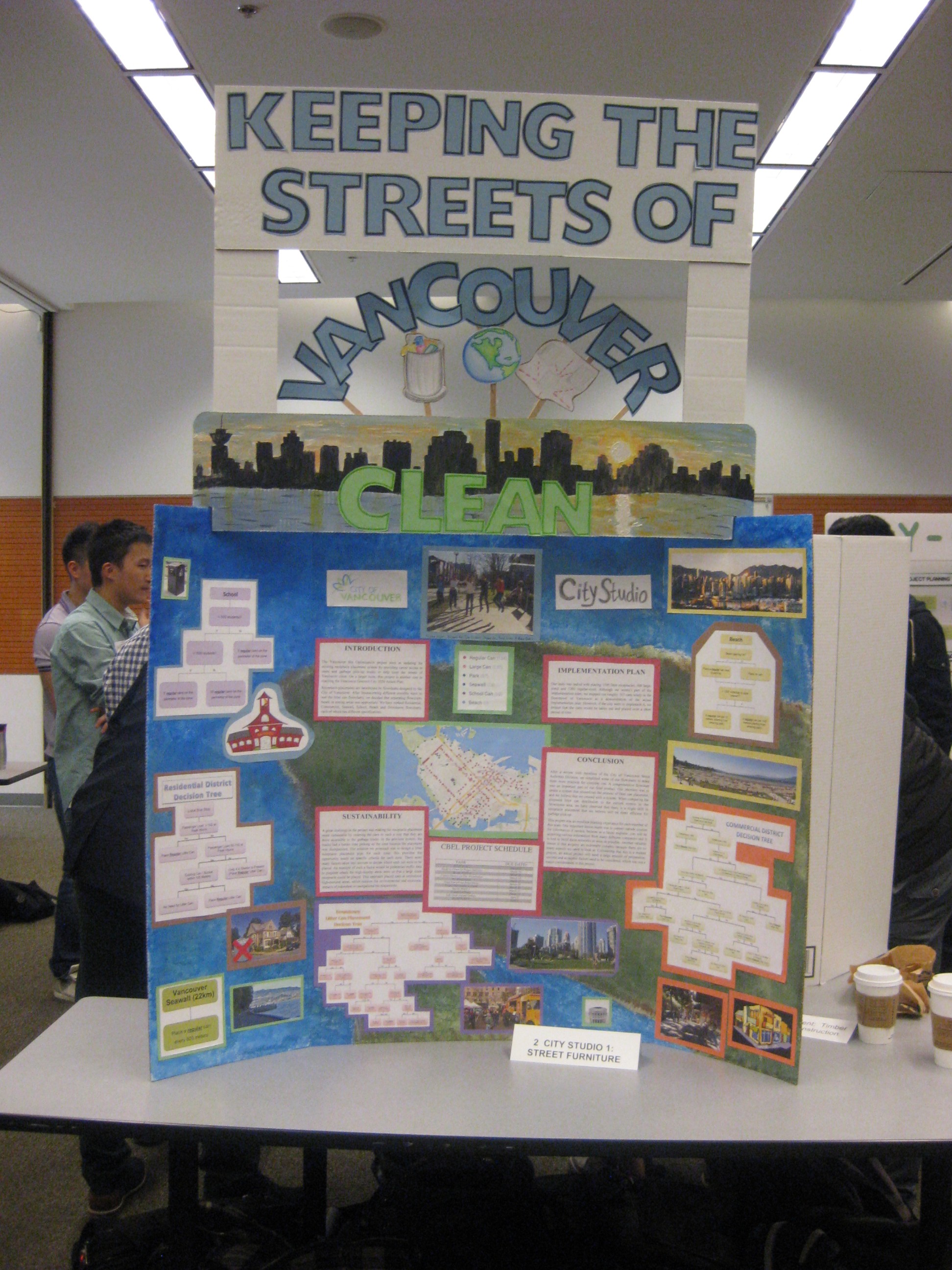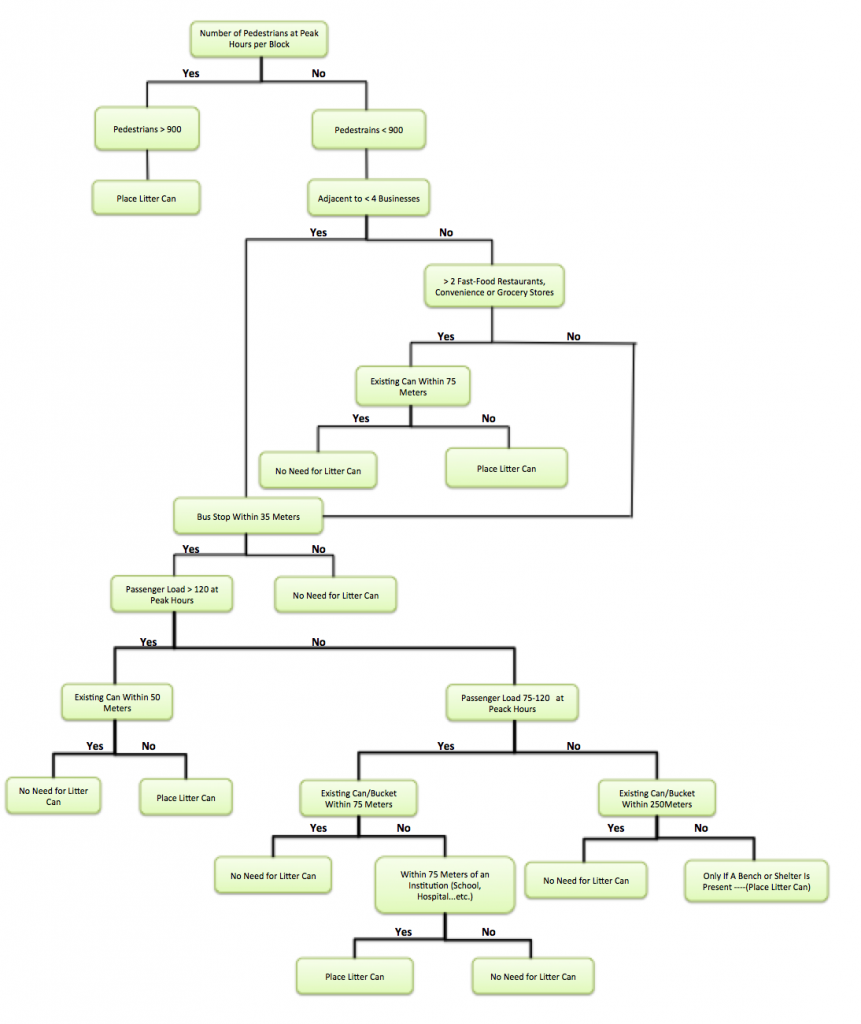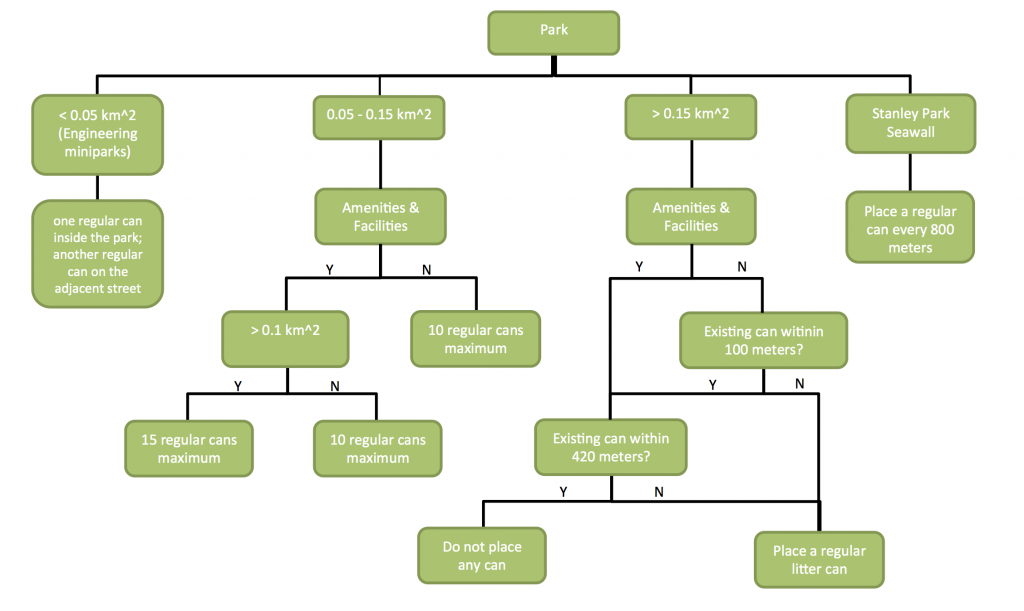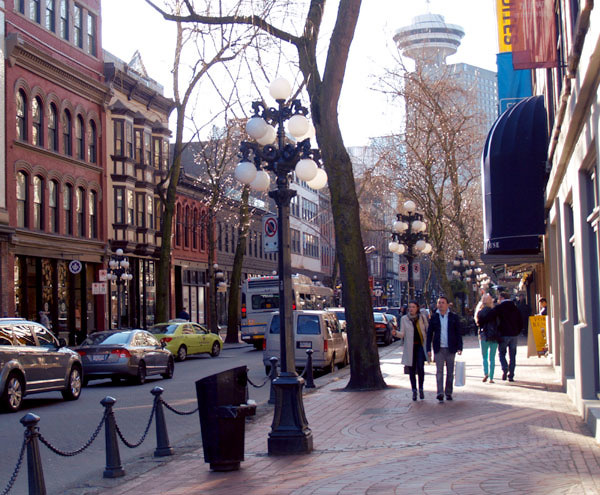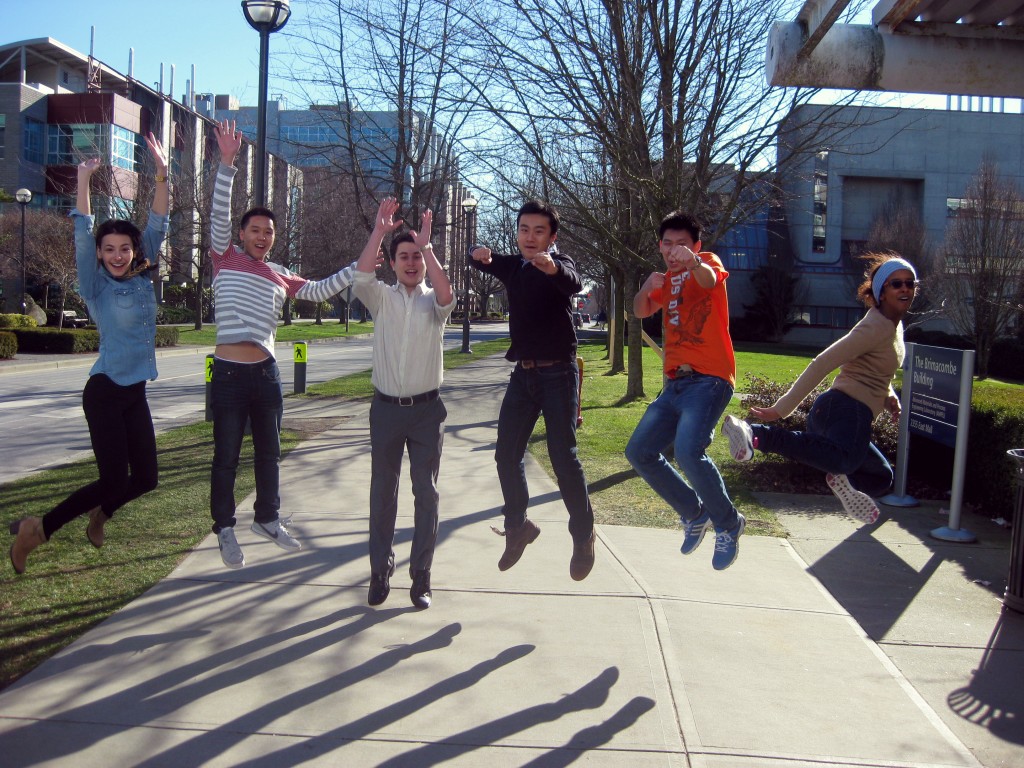Here is our last blog of the CityStudio Street Furniture Project. We will summarize our accomplishments, lesson learnt, as well as our contributions to the city of Vancouver.
ACHIEVEMENTS
The Vancouver Bin Optimization project aims at updating the existing receptacle placement system by providing easier access to users and garbage pick-up trucks to help keep the streets of Vancouver clean. On a larger scale, this project is another step to reaching the Vancouver Greenest City 2020 Action Plan.
Receptacle placements are determined by flowcharts designed by the City of Vancouver. After brainstorming different possible ways to sort the litter can flowcharts, we decided that separating flowcharts based on zoning areas was appropriate. We have created Residential, Commercial, Seawall, School, Beach and Downtown flowcharts, each of which have different specifications.
After a review with members of the City of Vancouver Street Activities Division, we simplified some of our flowcharts to make them more practical for everyday use. With the intended use of our deliverables being flowcharts which determine placement of litter cans, a comprehensive flowchart was an important part of our final product. Our intention was to create a system that streamlines the process of litter can placement, and we believe that we created such a system. When comparing the proposed litter can distribution to the current system in the Downtown area, we have observed that there is a slight shift in receptacle placement that we believe will be more efficient for garbage pick-up.
The Poster we made as the final presentation.
Here is us at the Poster Session in Kaiser 2020, UBC Vancouver Campus.
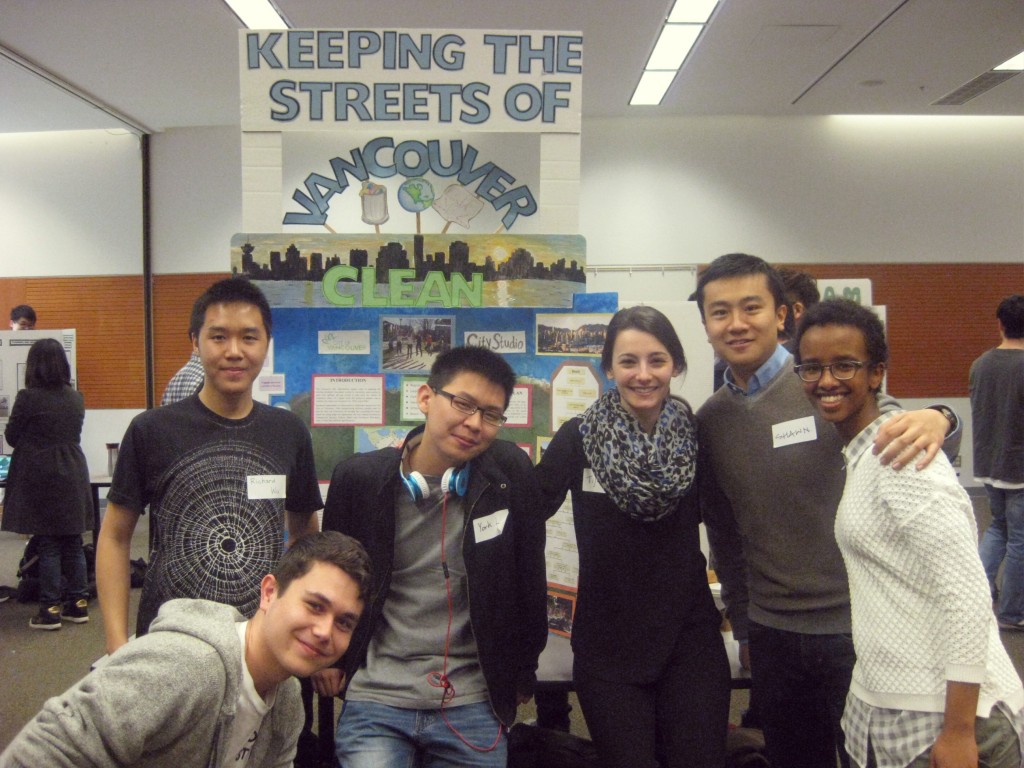
L to R: Tyler Dickens, Richard Wu, York Liaw, Tijana Sljivic, Shawn He, Mona Dahir
LESSONS LEARNT
This project was an excellent learning experience for each member of this team. One important lesson learnt was to contact outside sources for information if needed, because as a future engineer, you will be acquiring various information from many different companies and it is best to build these networks as soon as possible. Another valuable lesson is that projects are extremely complex because there are so many aspects we need to look at. Considering that this is a student project, an actual project will need a large amount of preparation; societal and economic factors need to be considered, which was not a major consideration in this project.
CONTRIBUTIONS TO THE COMMUNITY
An improvement of the system was making the receptacle placement more sustainable by organizing the cans so that they are more accessible to the garbage-trucks. In the previous system, the trucks had a harder time picking up the cans because the placement was disorganized. The solution to this issue was to design a litter receptacle placement plan for each zone; this adjustment provided the opportunity touch on specific criterias for each zone, allowing cans to be placed at centralized high-demand areas, which reduced the environmental and economic impacts of redundant or unorganized bin placements.
This project is considered a small, yet important, step in the implementation of Vancouver Greenest City 2020 Action Plan. The optimized litter receptacle placements will create a more accessible system for users, and also help increase the efficiency of the entire waste collection system in the city.
Hubbub #2 held by CityStudio at Vancouver City Hall.
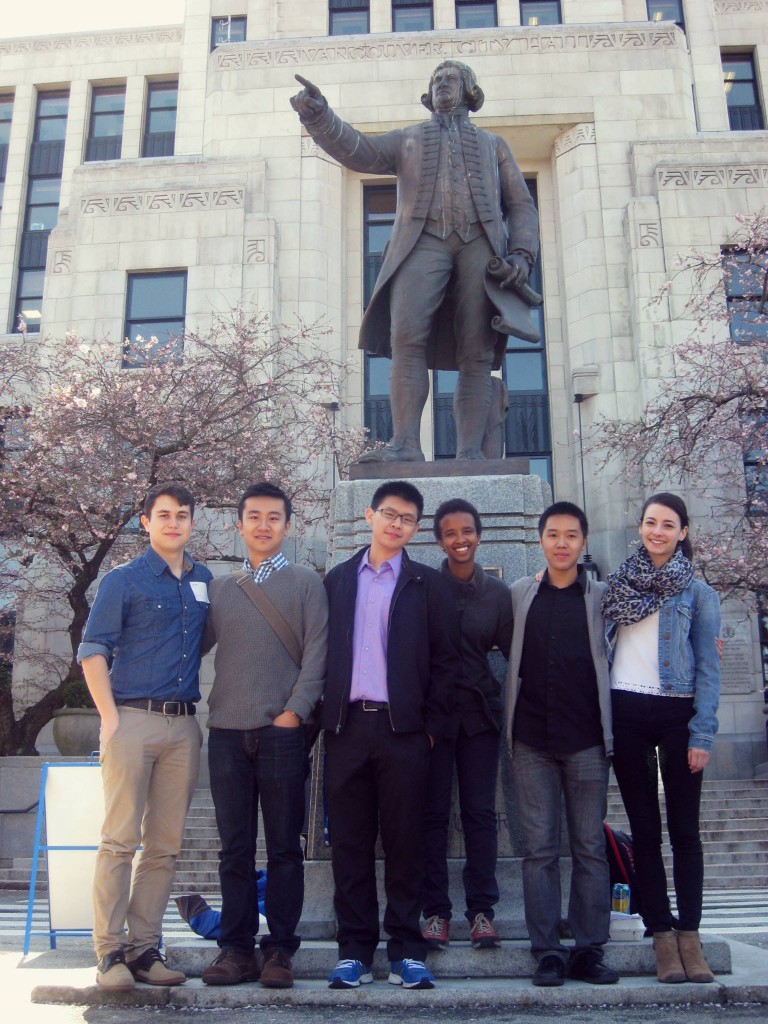 L to R: Tyler Dickens, Shawn He, York Liaw, Mona Dahir, Richard Wu, and Tijana Sljivic
L to R: Tyler Dickens, Shawn He, York Liaw, Mona Dahir, Richard Wu, and Tijana Sljivic
Thank you for following the project with our blogs, we hope you enjoyed them. 🙂

